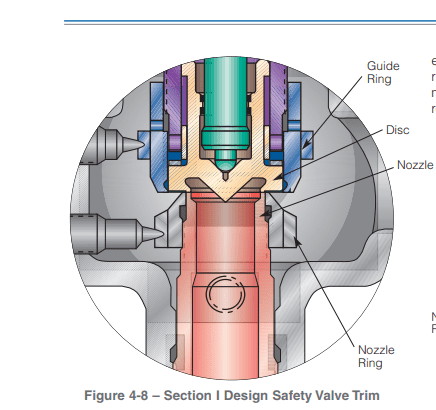gguliye
Industrial
- Apr 17, 2019
- 117
Dear All,
May be my question is so basic, however, i am doing my hair off, because i couldnt come up to the result why
in ASME section I valves, we have 2 rings. Nozzle ring and guide ring. Why lowering guide ring decreases blowdown of the valve?
In my opinion it has to increase the blowdown. Could someone help me with this question?
Regards,

May be my question is so basic, however, i am doing my hair off, because i couldnt come up to the result why
in ASME section I valves, we have 2 rings. Nozzle ring and guide ring. Why lowering guide ring decreases blowdown of the valve?
In my opinion it has to increase the blowdown. Could someone help me with this question?
Regards,

